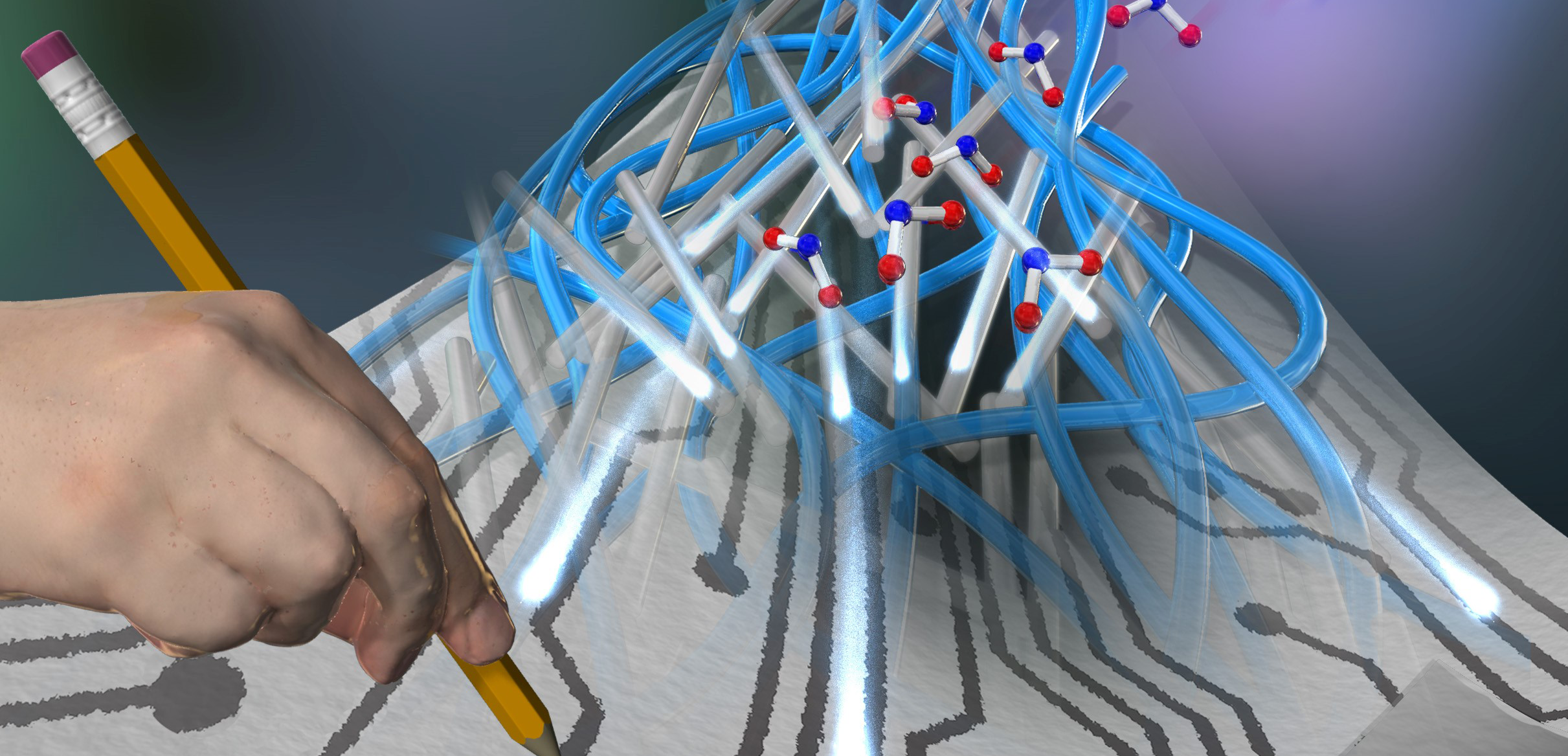
New molecular sensor ticks the “trillion sensor universe” boxes
Researchers report a robust lightweight low-cost molecular sensor based on paper for efficient gas detection
The “Internet of Things” concept of interconnecting devices to streamline the experiences of the global population is reliant on sensors to acquire the real-world data. The extent of this reliance is illustrated by the dauntingly named “trillion sensors universe” initiative that was started to support the project. Optimizing the properties of sensor devices to achieve this abundance is therefore critical to establishing viable networks. Researchers at Osaka University have developed a paper-based disposable gas sensor that caters to widespread sensing. Their findings are published in ACS Applied Materials and Interfaces .
Issues such as the cost and sustainability of the raw materials used, the robustness and consistency of the devices, and their disposability and environmental impact are some of the criteria that must be addressed alongside the sensing performance when considering detection on such a large scale.
To fulfill these requirements, the researchers have developed a zinc oxide molecular sensor made from very fine nanowires that is supported by a biodegradable cellulose nanofiber backing and has graphite electrodes that can be drawn on with a pencil. The sensor was used to detect NO 2 gas—an important component of many industrial processes—and showed a performance comparable to that of available electrodes.
“Our design ticks many boxes for delivering economical and environmentally conscious molecular sensing on a large scale,” study lead author Hirotaka Koga explains. “The zinc oxide nanowires offer a very large surface area for gas molecules to attach to, and the cellulose paper support is robust and can be cut very small—to just a few millimeters—with ordinary scissors. The sensors are prepared in a simple 2-step process, which makes them appropriate for widespread use.”
When NO 2 molecules are present around the sensor they adsorb to the surface of the nanowires and the resistance increases as the gas molecules affect the electrons that carry current between the electrodes. The resistance increase is greater for more concentrated gas.
“We expect the many advantages of our device to make a significant contribution, particularly to molecular detection,” Associate Professor Koga explains. “The accurate measurement of gas concentrations is important in many fields including healthcare, environmental protection, chemical production, and health and safety.”
The researchers hope that the simple 2-step process can be extended for the detection of other gas molecules.

Fig. A paper-based molecular sensor device, which is constructed from a wood-derived cellulose nanofiber paper substrate, a zinc oxide nanowire sensor, and a pencil-drawn graphite electrode, demonstrates not only efficient molecular sensing but also cut-and-paste usability and easy disposability for future IoT society.
The article, “Paper-based disposable molecular sensor constructed from oxide nanowires, cellulose nanofibers, and pencil-drawn electrodes” was published in ACS Applied Materials and Interfaces at DOI: https://doi.org/10.1021/acsami.9b01287 .
Related links
